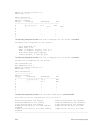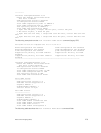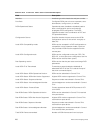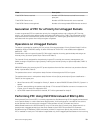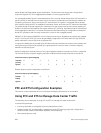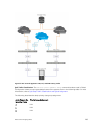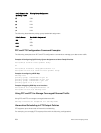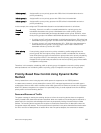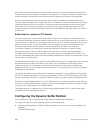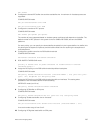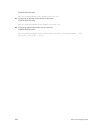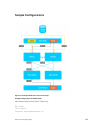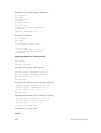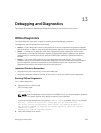When a device sends a pause frame to another device, the time for which the sending of packets from
the other device must be stopped is contained in the pause frame. The device that sent the pause frame
empties the buffer to be less than the threshold value and restarts the acceptance of data packets.
Dynamic ingress buffering enables the sending of pause frames at different thresholds based on the
number of ports that experience congestion at a time. This behavior impacts the total buffer size used by
a particular lossless priority on an interface. The pause and resume thresholds can also be configured
dynamically. You can configure a buffer size, pause threshold, ingress shared threshold weight, and
resume threshold to control and manage the total amount of buffers that are to be used in your network
environment.
Buffer Sizes for Lossless or PFC Packets
You can configure up to a maximum of 4 lossless (PFC) queues. By configuring 4 lossless queues, you
can configure 4 different priorities and assign a particular priority to each application that your network is
used to process. For example, you can assign a higher priority for time-sensitive applications and a lower
priority for other services, such as file transfers. You can configure the amount of buffer space to be
allocated for each priority and the pause or resume thresholds for the buffer. This method of
configuration enables you to effectively manage and administer the behavior of lossless queues.
Although the system contains 12 MB of space for shared buffers, a minimum guaranteed buffer is
provided to all the internal and external ports in the system for both unicast and multicast traffic. This
minimum guaranteed buffer reduces the total available shared buffer to 9.5 MB. This shared buffer can be
used for lossy and lossless traffic.
The default behavior causes up to a maximum of 6.6 MB to be used for PFC-related traffic. The remaining
approximate space of 1 MB can be used by lossy traffic. You can allocate all the remaining 1 MB to
lossless PFC queues. If you allocate in such a way, the performance of lossy traffic is reduced and
degraded. Although you can allocate a maximum buffer size, it is used only if a PFC priority is configured
and applied on the interface.
The number of lossless queues supported on the system is dependent on the availability of total buffers
for PFC. The default configuration in the system guarantees a minimum of 52 KB per queue if all the 128
queues are congested. However, modifying the buffer allocation per queue impacts this default behavior.
By default the total available buffer for PFC is 6.6 MB and when you configure dynamic ingress buffering,
a minimum of least 52 KB per queue is used when all ports are congested. By default, the system enables
a maximum of 1 lossless queue on the Z9500 platform.
This default behavior is impacted if you modify the total buffer available for PFC or assign static buffer
configurations to the individual PFC queues.
Configuring the Dynamic Buffer Method
Priority-based flow control using dynamic buffer spaces is supported on the platform.
To configure the dynamic buffer capability, perform the following steps:
1. Enable the DCB application. By default, DCB is enabled and link-level flow control is disabled on all
interfaces.
CONFIGURATION mode
286
Data Center Bridging (DCB)



